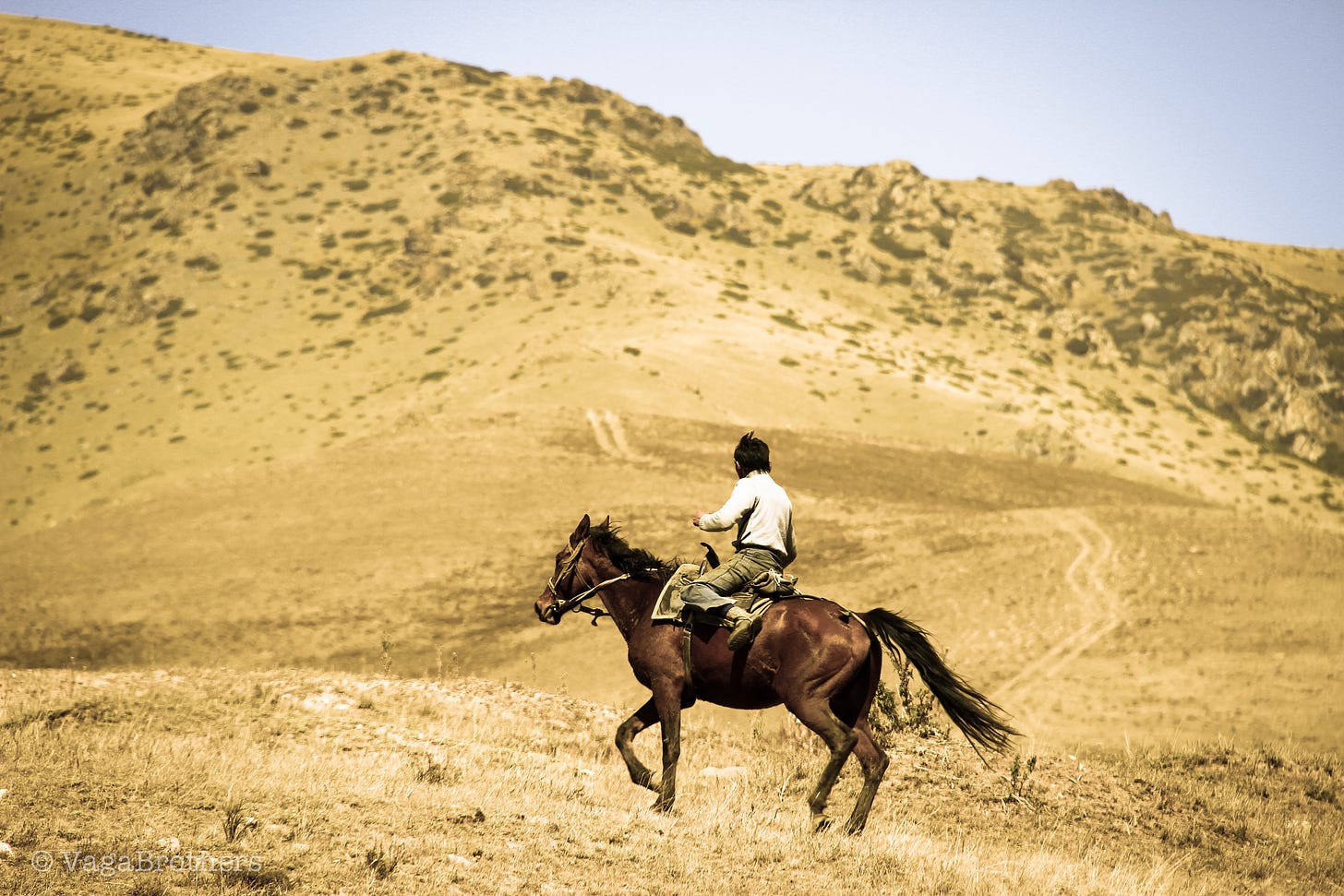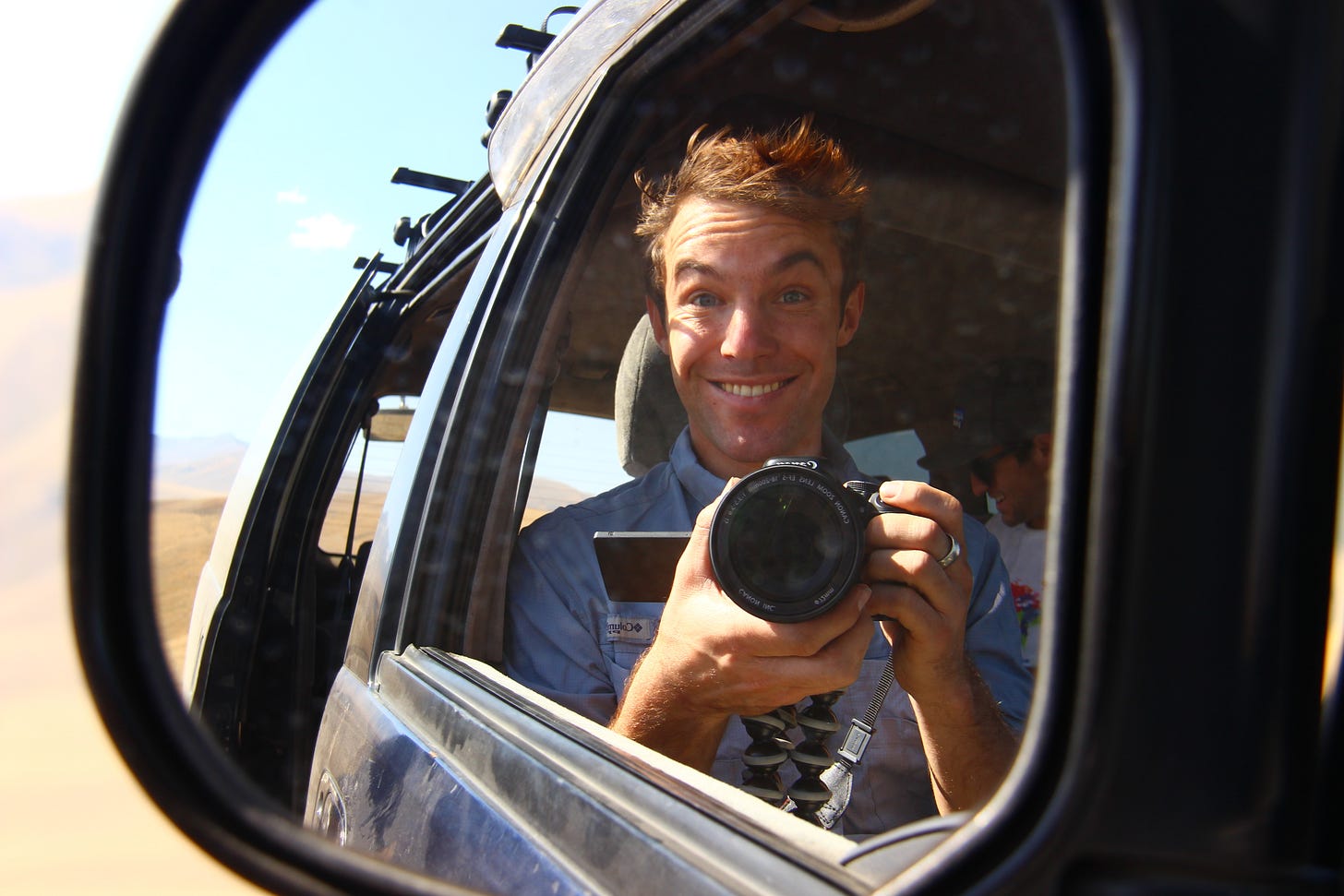I was recently going through some of my old writing and discovered a batch of essays I wrote in 2013 for MSN as part of the Biggest, Baddest, Bucket List competition I won with my brother Alex. We visited 25 countries in 25 weeks and posted 2 YouTube videos, a blog post and an article each week.
While the rapid speed limited my ability to fully dive into each culture we visited, I think it also sharpened my observational skills by forcing me to look for moments that could stand for a larger theme or lesson of each week.
The following essay is from Kazakhstan. And given my recent articles about the Russian diaspora and the explosion of digital nomadism, it feels like a time capsule from 10 years ago.
Enjoy, and please let me know if you would like me to publish more of my earlier travel writing!
Best,
Marko
It wasn't until after we'd left the yurt that our guide Alexander told us the nomads had wanted to slaughter a horse and cook us dinner.
“I would have told you in the moment,” he said as our driver Sasha drove the 4x4 through a small stream. “But I thought you might say yes, and then you'd have had to stay until all the meat was eaten – maybe a week.”
The nomads' vodka was still warm in our bellies and we laughingly thanked Alexander for his concern.
“In any case, it is better that we left. These men,” continued Alexander, looking towards the sunset as Sasha turned down the road into the darkening valley. “They are men of the open land. They know no rules.”
Sasha pulled a black pistol from his right pocket, returned it to the glove box, and drove to Almaty in silence.
Two days earlier, we stood in a falcon farm on the outskirts of Almaty, learning about Kazakhstan's nomadic tradition of falconry. The bird before us was one of dozens kept in cages, a far cry from the freedom of soaring over the open Kazakh steppes.
“I call him the Count of Monte Cristo,” said the falconer, admiring the bird with a tint of sadness in his eye. “Because he's spent his whole life in jail.”
Kazakhstan is historically a land of nomads, wandering horsemen of Central Asia who embody the word we bloggers often adopt as monikers. We hoped that traveling to Kazakhstan would illuminate our eponyms.
The farm's owner, Paul, was dressed in the traditional costume of Kazakh nomads, but he was Volga German, his parents sent to Kazakhstan by Stalin in the 1930s. It was an odd juxtaposition of cultures, but nomads were hard surprisingly hard to come by in Kazakhstan.
“Do nomads still dress like this?” I asked him, hoping he might tell me the tradition had survived in some remote corner of the country.
“Nobody ever dressed like this,” he laughed, “It is just a myth.”
“But do nomads still hunt with falcons?” asked Alex.
“Falconry disappeared during Communist times,” said the falconer, shaking his head. “And so did the nomads.”
Until the 1930s, nomadism was the norm across Kazakhstan. But with the arrival of communism, pastoral lands were collectivized, livestock appropriated, and nomads settled into villages. Almost a million Kazakhs died in the subsequent famine. By 1935 nomadism was essentially dead.
Keep reading with a 7-day free trial
Subscribe to The Missive to keep reading this post and get 7 days of free access to the full post archives.




